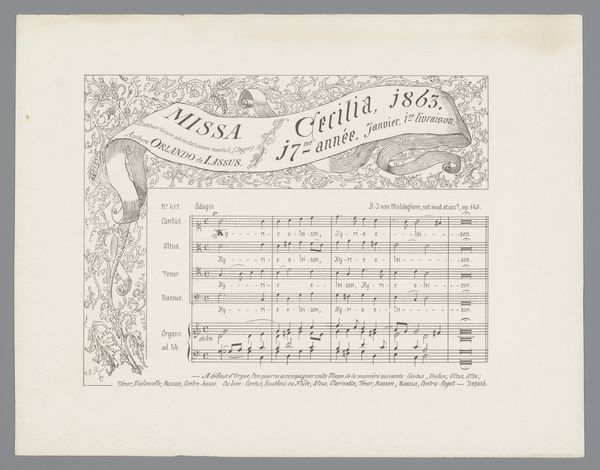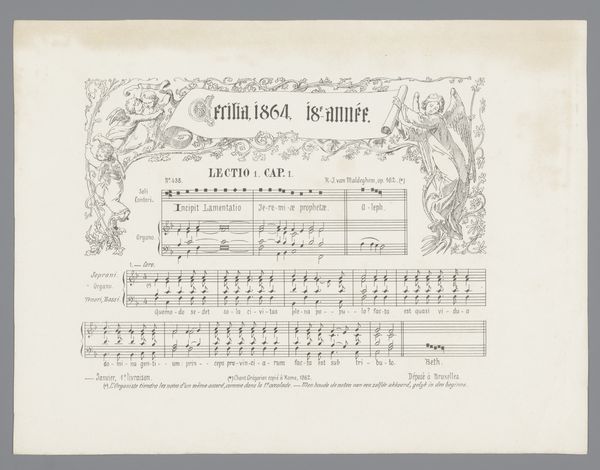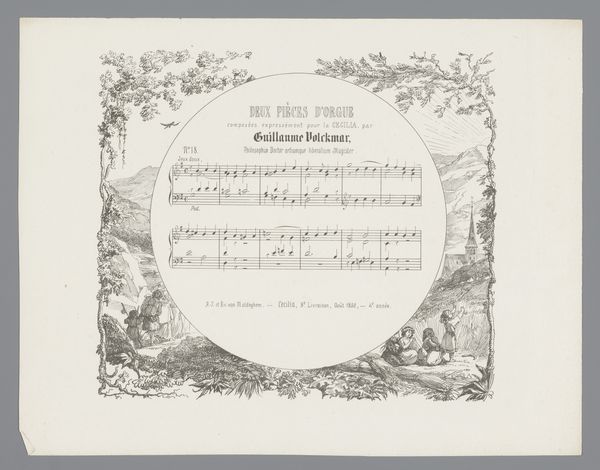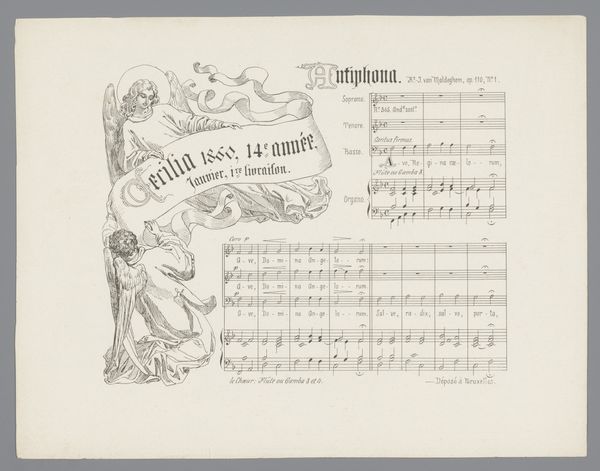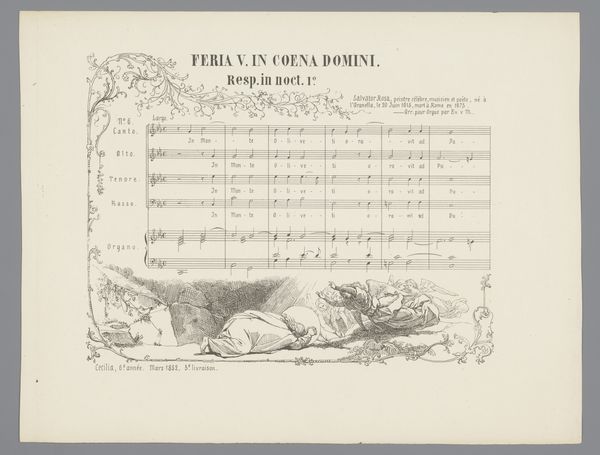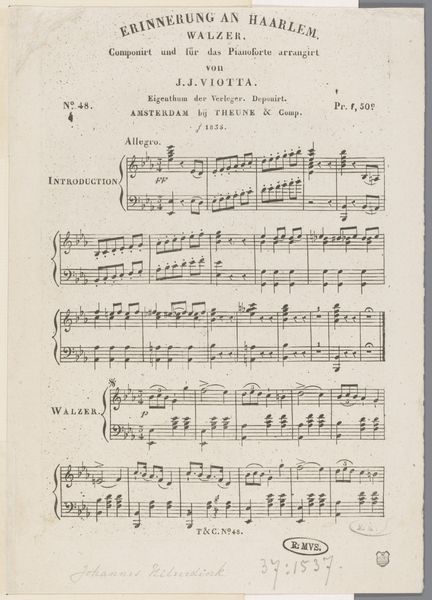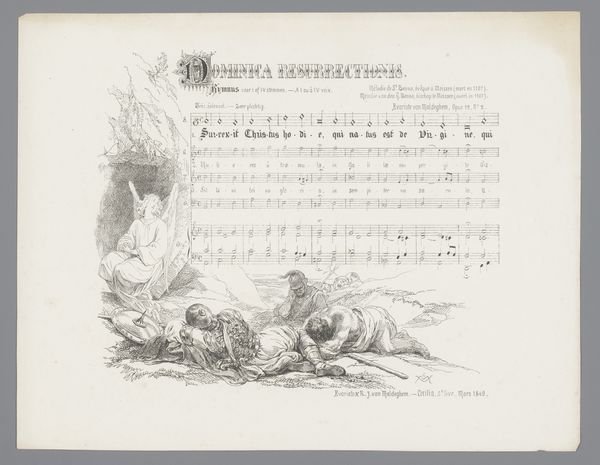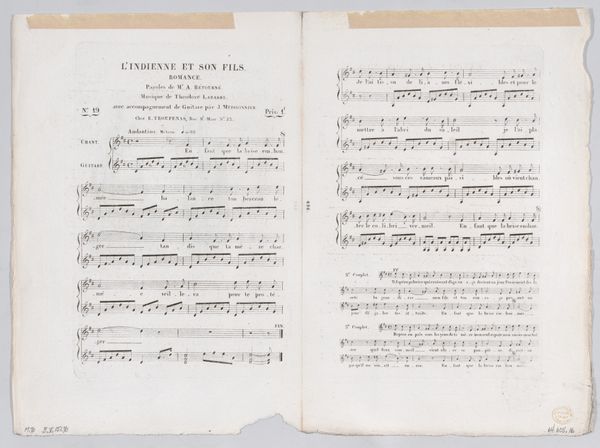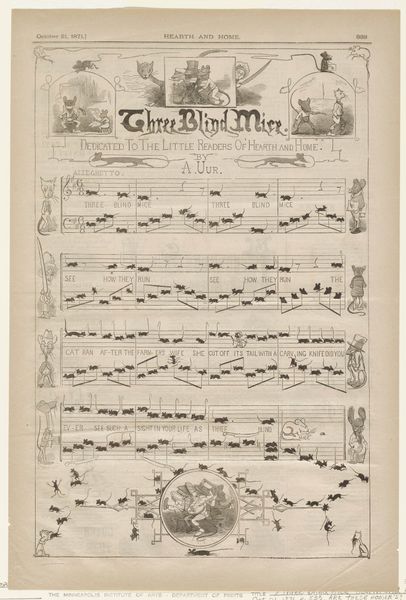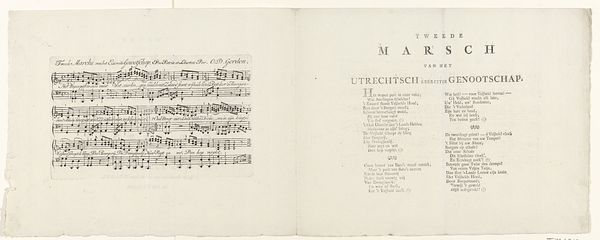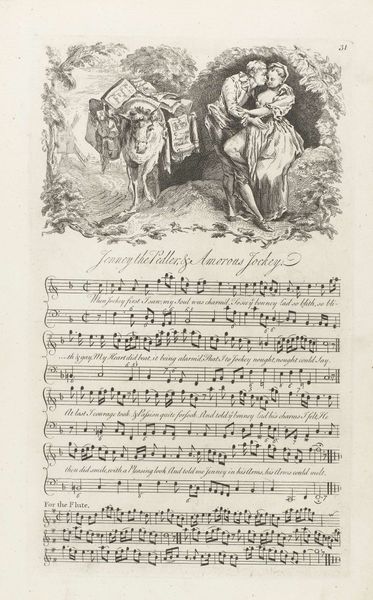
Dimensions: height 261 mm, width 335 mm
Copyright: Rijks Museum: Open Domain
Curator: This is "Musicerende engelen," or "Musician Angels," an 1853 engraving by Eugène Van Maldeghem. Look at the materiality of the aged paper itself. It tells a story of preservation, but also of the ephemerality of printed matter. What strikes you about it? Editor: The way the music is presented seems really precise. And it’s on aged paper which lends a beautiful historical feeling, despite it being a printed musical work, which I normally don't associate with artistic intent. I suppose its technique begs the question, is this high art, or craft? Curator: Precisely! How does this mass-produced engraving, intended for musical performance, challenge our ideas about art's value and distribution in 19th century? Editor: I never really thought about how sheet music fits into the art world. So, would you consider this artwork in the context of labor practices during that era? I suppose this means considering printmaking, engraving. Curator: Exactly. The labor of the engraver, the printing press workers, the composer…all these processes are embedded in the final product. What does the ability to reproduce images and musical scores mean for access to art and culture? Editor: It's democratization through multiplication. It also poses an interesting challenge: is art confined to original, unique objects, or can mass-produced items carry artistic value as well? Curator: This engraving is as much about music and art as it is about social history, isn't it? Editor: Definitely! Thinking about art through the lens of materials and production really changes the way I appreciate it. Curator: Indeed. It highlights the intricate web of labor and materials that contribute to our experience.
Comments
No comments
Be the first to comment and join the conversation on the ultimate creative platform.
